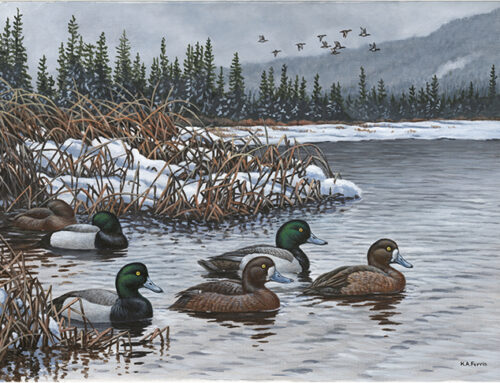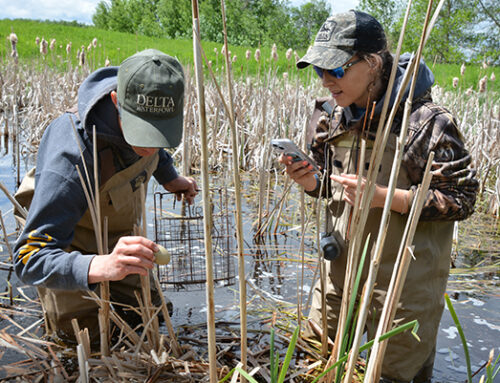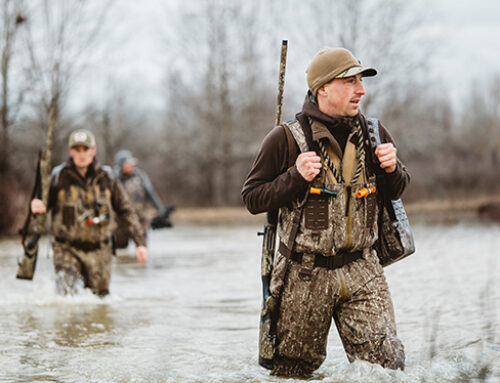Bird Flu Outbreak Update Fall 2024

Population immunity aiding in lessened cases but hunters should still handle wild birds with commonsense-precaution
Highly pathogenic avian influenza, otherwise known as HPAI or the avian bird flu, is currently not labeled as a significant threat to the viability and health of waterfowl populations. But, as the 2024-2025 waterfowl seasons begin to open across the United States and Canada, hunters should still take the same common-sense precautions that have been previously advised when handling wild game birds.
The current HPAI outbreak was first detected in North America late in 2021, with cases reported in all four migratory bird flyways across the United States and Canada. HPAI has primarily afflicted farm-raised poultry. Millions of chickens, turkeys, and other captive birds died as a result of HPAI in domestic flocks in 2022. The prevalence of HPAI caused egg shortages and a resulting spike in egg prices and related bakery goods.
Fortunately, detections of HPAI in wild game and poultry have slowed in comparison to fall of 2022.
“It makes a lot of sense that HPAI viruses quickly spread when they were first introduced into a relatively naive population in late 2021, but they have since become somewhat less common as the population affected by the disease has increased,” said Dr. Andy Ramey, research geneticist at the U.S. Geological Survey Alaska Science Center.
With this in mind, Ramey reminded that there continues to be additional detection of HPAI among some birds in North America, so we might expect that these viruses will continue to circulate among wild birds at some level throughout the autumn (2024).
“From what we’ve seen thus far here in North America and really more generally across the globe, I don’t think HPAI appears to be any kind of significant threat to the viability and health of waterfowl populations per se, although individuals may certainly be affected,” Ramey said.
Based upon the best available data, it seems that the bird flu viruses may have been more common in waterfowl in autumn of 2022, at least as compared to autumn 2023. Ramey suspects that it has to do with the function of population immunity, or the proportion of animals that have antibodies to the HPAI viruses.
“Those antibodies are produced by animals when they’re exposed to HPAI viruses, and they facilitate the recovery of that animal from infection,” explained Ramey. “Once those animals have antibodies to HPAI viruses, it also gives them some level of protection against reinfection, as well as protection against the development of severe disease or death if they ultimately are reinfected. Similar to the concept of a vaccine.”
He did state that HPAI represents and likely remains a much more significant threat to other water birds that might be more susceptible to disease and that interact with waterfowl maintaining these viruses, as well as other wildlife that scavenge sick and dead birds.
According to the Center for Disease Control, the threat of HPAI to human health remains low. A poultry farm worker in Colorado contracted HPAI in 2022, but that person was involved in depopulating an infected flock. The worker exhibited flu symptoms and recovered. In total, 14 cases of HPAI affecting people have been reported in North America (as indicated by the CDC’s most recent update), and all have been associated with exposure to domestic animals.
This season and into the future, hunters should follow common-sense precautions while handling wild birds. Wash your hands after hunting, wear protective gloves while field dressing birds, don’t eat, drink, or smoke while handling birds, and sanitize game-processing areas. For more information, visit https://fws.gov/avian-influenza.
While afield, Ramey cautions hunters not to handle any birds that are obviously sick or found dead. Birds infected with HPAI might exhibit symptoms such as swimming or walking in circles, inability to fly, and a lack of coordination. If something seems odd or likely that there may be a disease event, hunters are urged to report it to the U.S. Fish and Wildlife Service or state management agency.
USGS and the U.S. Fish and Wildlife Service continue to closely monitor HPAI, testing waterfowl and other birds during summer banding efforts. In addition, sampling of hunter-harvested waterfowl for HPAI will resume in September.
American hunters traveling to Canada are allowed to bring game bird meat into the United States but must follow U.S. Department of Agriculture importation guidelines. A USDA memo issued Aug. 3, 2023, https://content.govdelivery.com/accounts/USDAAPHIS/bulletins/368d413 details that all game birds must be cleaned, stored, and transported as follows:
- Viscera (innards), head, neck, feet, and one wing must be removed. In a change from 2022 guidelines, skin can now be left on.
- Feathers must be removed, except on one wing—as required by U.S. Fish and Wildlife Service for species identification.
- Carcasses must be rinsed in fresh, clean, potable water prior to packaging and must be free of dirt, blood, or feces.
- Carcasses must be chilled or frozen, placed in clean leak-proof plastic packaging, and stored in a leak-proof cooler or container.
- Cooked or cured game bird meat will not be allowed to be imported.
Hunter-harvested wild game bird trophies entering the United States from Canada must be fully finished, or accompanied by a VS import permit, or consigned directly to a USDA Approved Establishment. Hunters may find an approved taxidermy establishment by visiting the Veterinary Services Process Streamlining search page and searching for a taxidermist with the HPAI product code in your state.






Leave A Comment